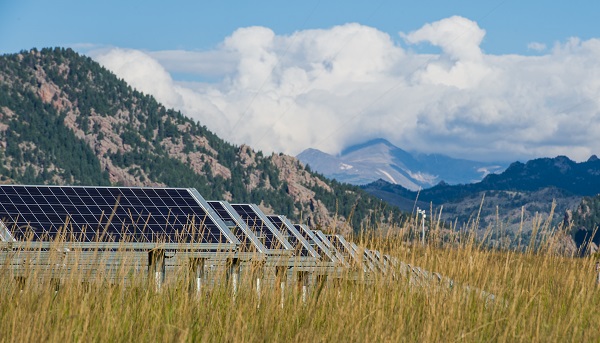Top Five Large-Scale Solar Myths
Feb. 3, 2016 by Megan Day
As large-scale solar facilities proliferate throughout the country, more communities are considering the potential merits and drawbacks of this new kind of neighbor. Initial reactions to the prospect of large-scale photovoltaic (PV) facilities or solar farms tend to include a myriad of misperceptions.
Actual questions about proposed solar farms in this former solar developer’s experience have included:
- Won't drivers cause accidents rubber-necking at this strange facility?
- Can my cattle graze on there?
- Can I run an extension cord to power my house?
Here are the top five myths I encountered in my six years of working with communities to build solar farms:
Myth #1: Solar farms are like factories
Local officials and planners often restrict solar farms in residential, commercial, and sometimes agricultural zoning districts, limiting their location to industrial districts. Industrial zoning is primarily intended to separate intense land uses, such as factories and distribution centers and their associated pollution, noise, and traffic, from residential areas. However, after construction, solar farms are quiet, clean facilities that generally have no on-site employees.
One city manager with numerous solar farms in his community compared the land use to a cemetery (no living inhabitants), demonstrating that solar farms can be compatible even with residential neighbors.
Myth #2: Glare
Residents and community officials often cite glare or blinding from solar facilities as a primary concern. While concentrating solar technologies do use mirrors which can cause glare, most solar farms use PV modules to generate electricity. PV modules use non-reflective glass and are designed to absorb rather than reflect the light that hits the panels in order to convert solar energy into electricity. PV modules are generally less reflective than windows[1] and are installed at numerous airports.[2]

Sun Edison PV array at the NWTC. Photo by Dennis Schroeder, NREL 11249490
Myth #3: Noise
The noisiest components in a solar farm are the inverters, which generate a low buzzing sound as they convert electricity from the direct current (DC) generated by PV modules to alternating current (AC) used by the electric grid. Tracking equipment allowing PV modules to face the sun over the course of the day can also generate a low level of noise. However, the noise generated by solar farms is generally not audible above ambient noise outside of the facility fence.[3]
Myth #4: Property values
While the impacts of a solar farm on neighboring property values have not been studied in-depth, numerous studies found the impact of wind energy generation on neighboring property values to be negligible.[4] As solar farms do not have the same impacts as wind farms (i.e., PV facilities do not cast a shadow on neighboring properties, cause light flicker, or have the same visual impact as wind farms), the impacts on property values caused by solar farms are anticipated to be less than the impacts of wind farms. Some communities have opted for mitigation measures to reduce visual impacts of solar farms through the use of vegetative screening or decorative fencing, since PV modules are usually mounted close to the ground (less than seven feet high).
Myth #5: Electro-magnetic fields
Solar facilities generate electro-magnetic fields similar to household appliances within close proximity, which dissipate with increasing distance and pose no health risk to neighboring residents.[5]
Concerns about proposed solar farms are often offset by local benefits such as significant local employment and spending during construction, increased property tax revenues with minimal drain on public services, and low water use, emission-free electricity generation.
[1]http://www.hindawi.com/journals/isrn/2011/651857/, http://www.mass.gov/eea/docs/doer/renewables/solar/solar-pv-guide.pdf
[2] Sandia National Laboratory developed a modeling tool, used by the Federal Aviation Administration, that tests for potential glare from solar installations on flight paths and control towers and can be used for other applications.
[3] http://files.masscec.com/research/StudyAcousticEMFLevelsSolarPhotovoltaicProjects.pdf
[4] http://www.realtor.org/field-guides/field-guide-to-wind-farms-their-effect-on-property-values
[5] http://files.masscec.com/research/StudyAcousticEMFLevelsSolarPhotovoltaicProjects.pdf, http://www.oregon.gov/odot/hwy/oipp/docs/emfconcerns.pdf; http://www.ncbi.nlm.nih.gov/pubmed/26023811
Share

